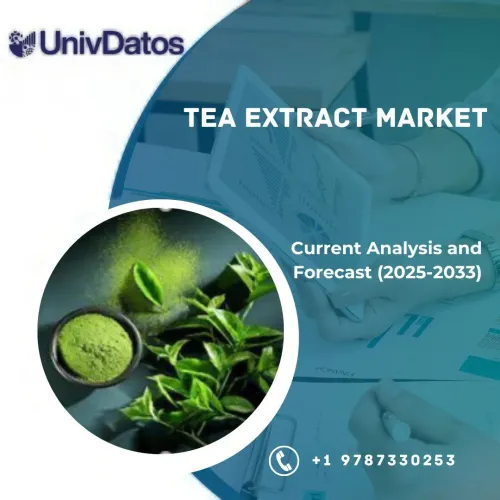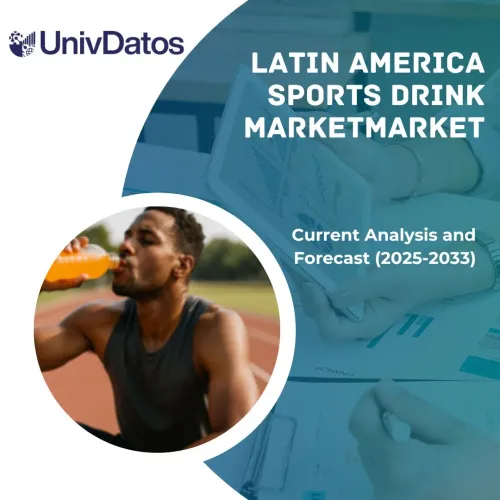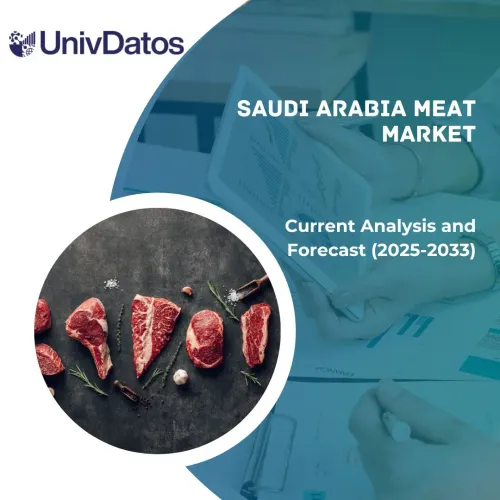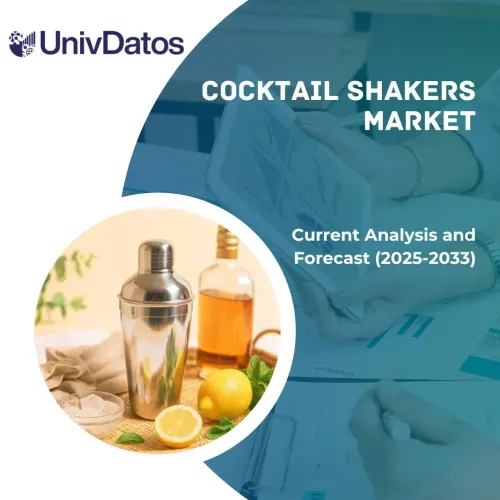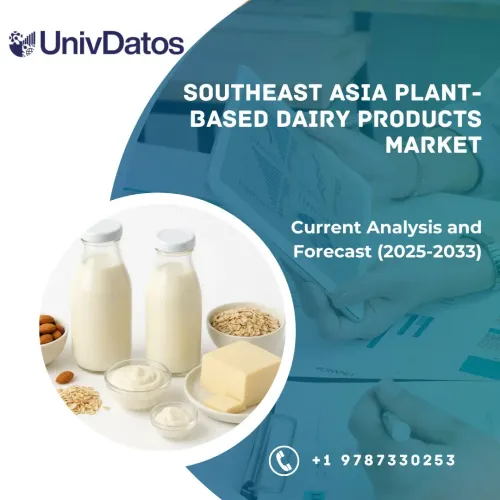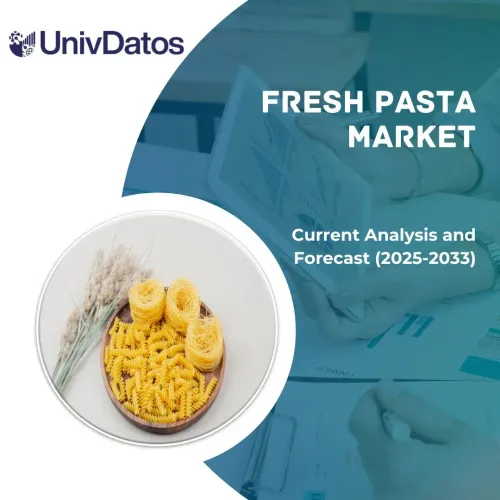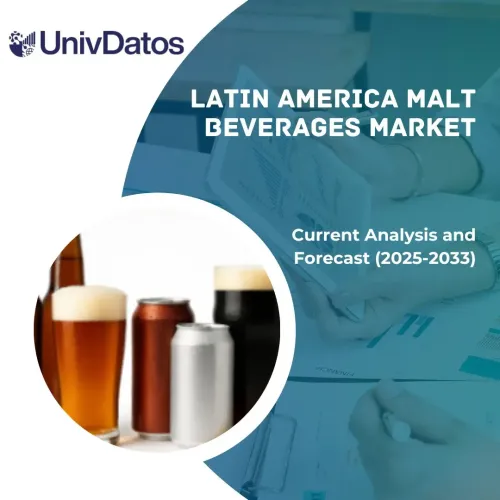- Home
- About Us
- Industry
- Services
- Reading
- Contact Us
Latin America Malt Beverages Market: Current Analysis and Forecast (2025-2033)
Emphasis By Product (Alcoholic Malt Beverages (Beer, Flavored Alcoholic Malt Beverages), Non-Alcoholic Malt Beverages), By Distribution Channel (On-Trade, Off-Trade (Liquor Store, Hypermarket/Supermarket, Online, Others), By Country (Mexico, Brazil, Argentina, Chile, Rest of Latin America)
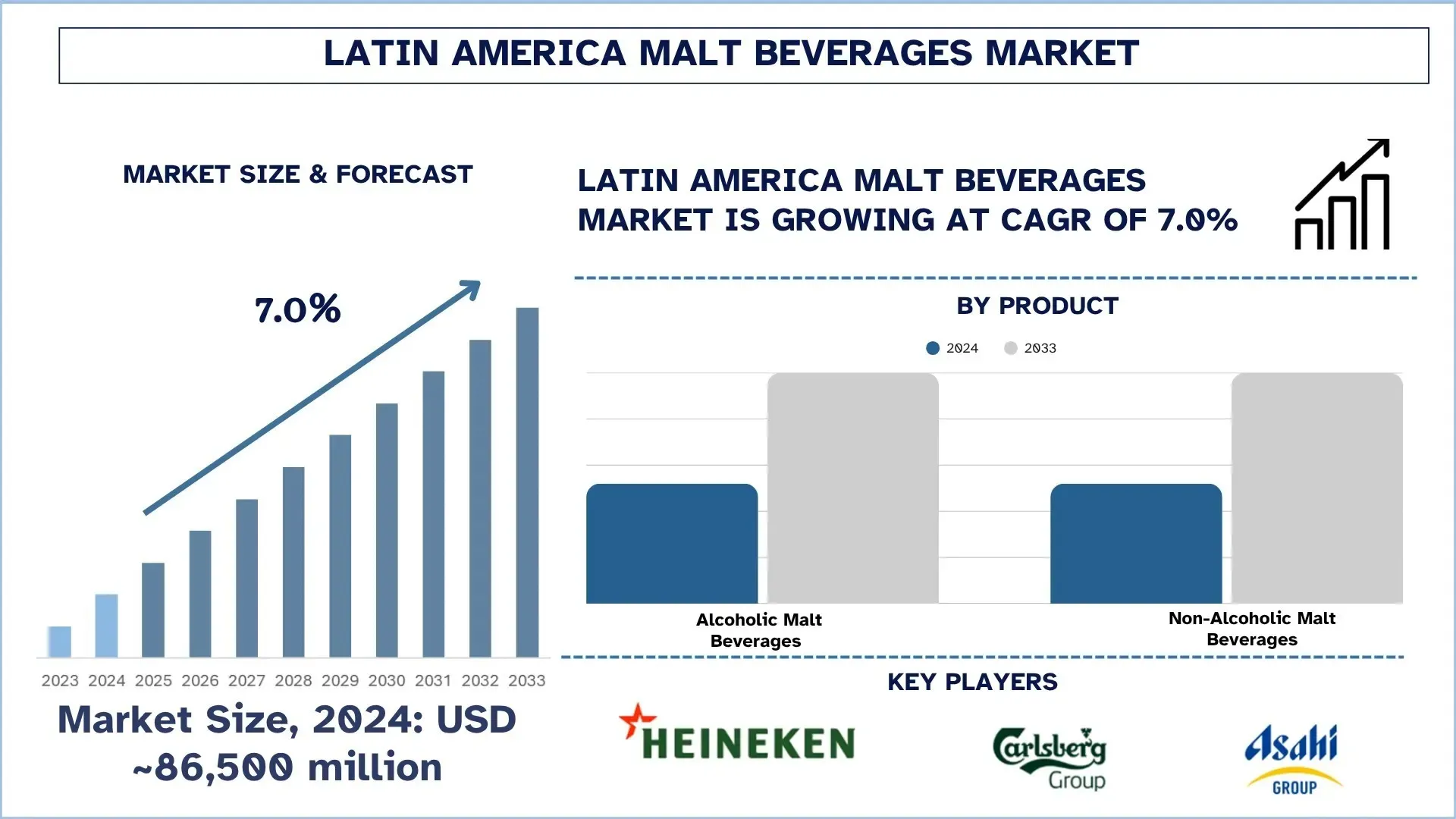
Latin America Malt Beverages Market Size & Forecast
The Latin America Malt Beverages market was valued at USD 86,500 million in 2024 and is expected to grow at a strong CAGR of around 7.0% during the forecast period (2025- 2033F). The Latin America Malt Beverages market has been supported by various factors such as a rising middle-class population, an increase in disposable income, trends towards local flavors, and rising investment through mergers and acquisitions in the key countries of Latin America, such as Brazil, Argentina, Mexico, etc.
Latin America Malt Beverages Market Analysis
The Latin America malt beverage market is showing consistent and healthy growth. As customers are getting inclined towards recreational activities and leisure, the demand for malt beverages, especially in the alcoholic segment, has grown extensively. Furthermore, economic factors such as a rise in disposable income, a surge in the middle-class population, and impending investments by the private players to offer a wide variety of malt beverage products have significantly boosted the demand.
Additionally, some other factors such as rising mergers and acquisitions, preference for local flavors, and non-alcoholic beer among the younger generation have also been pivotal to the upliftment of the malt beverages in the Latin America region.
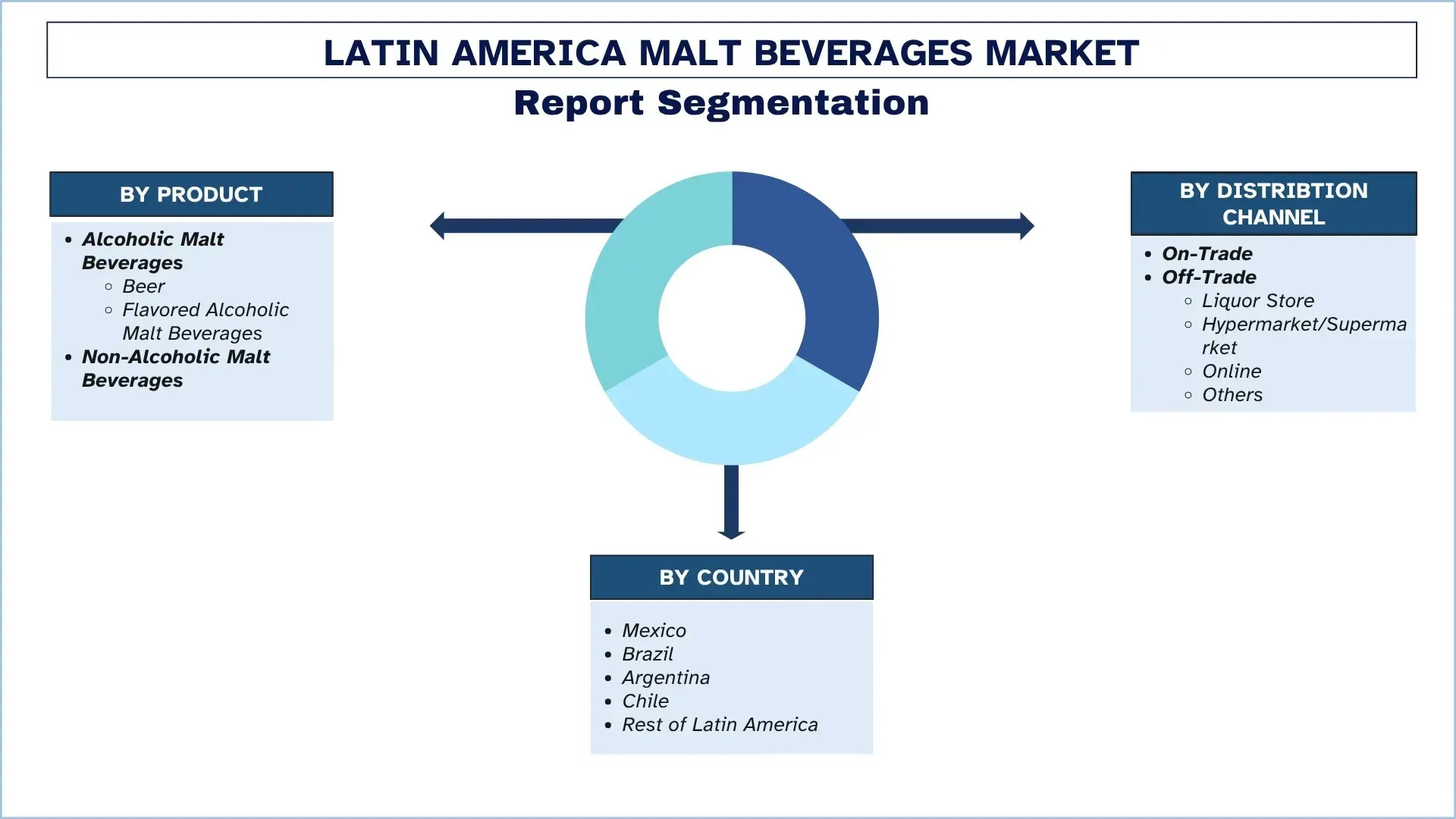
Latin America Malt Beverages Market Trends
This section discusses the key market trends that are influencing the various segments of the Latin America Malt Beverages market, as found by our team of research experts.
Mergers & Acquisitions in the Latin America Malt Beverages Market:
Mergers and acquisitions in the Latin America region among the malt beverage producers are another trend that is being observed. As the market is growing and foreign brands are notably entering the Latin American region to tap the opportunities, many of the companies are opting for the acquisition of smaller brands in order to easily connect with the consumers through the addition of a customer base.
For instance, in 2025, Heineken announced its acquisition of FIFCO’s beverages and retail business for a total cost of USD 3.2 billion. The acquisition will provide Heineken with the remaining 75% of Distribuidora La Florida, as well as FIFCO stakes in certain other businesses. This will also help the company to expand and consolidate its position in the Latin American region.
In another instance, Heineken also signed a 10-year contract with Cooperativa Agrária to buy Brazilian malt beginning in 2023. The deal made its place in 2021 and provided ample push to the efforts of Heineken to improve its presence in the Latin American region.
Key Market Segmentation:
This section provides an analysis of the key trends in each segment of the Latin America Malt Beverages market report, along with forecasts at the country and regional levels for 2025-2033.
Alcoholic Beverages have shown promising growth in the Malt Beverages Market.
Based on product, the Latin America malt beverages market has been bifurcated into alcoholic malt beverages and non-alcoholic malt beverages. Of these, alcoholic malt beverages have held the major share of the market due to the traditional consumption of alcoholic drinks by the population in general for recreational purposes. Furthermore, the consumption of alcohol in pubs, bars, and restaurants has also proven to be conducive to keeping the share of alcoholic malt beverages on the higher side. However, with the younger generation more inclined towards health-conscious drinks and stoicism, the demand for non-alcoholic malt beverages has shown impressive growth and has incessantly grown its market share in recent years.
The On-Trade category dominates the Latin America Malt Beverages Market.
Based on the Distribution channel, the market is bifurcated into on-trade and off-trade. The on-trade segment has held a significant market share. As the majority of the customers purchase alcoholic and non-alcoholic beverages from an alcoholic shop, the segment has held a high share. Additionally, a large number of customers purchase alcohol and consume it at home/personal events, due to which the segment will continue to hold a notable market share.
Brazil is expected to grow at a considerable rate during the forecast period.
Brazil has held the major market share in the Latin American malt beverage market. Some of the key factors attributed to the growth are high consumption of alcohol, rising sports culture, and an increase in disposable income, among others, which have majorly contributed to the rise. Additionally, the market is home to many of the large regional brands due to the robust domestic demand. According to the Brazilian Beer Industry, the country produced 15.3 billion liters of beer, demonstrating a strong domestic production.
Furthermore, according to the São Paulo newspaper, the country added 102 new breweries in 2023, which is a 5.5% growth compared to the previous year.
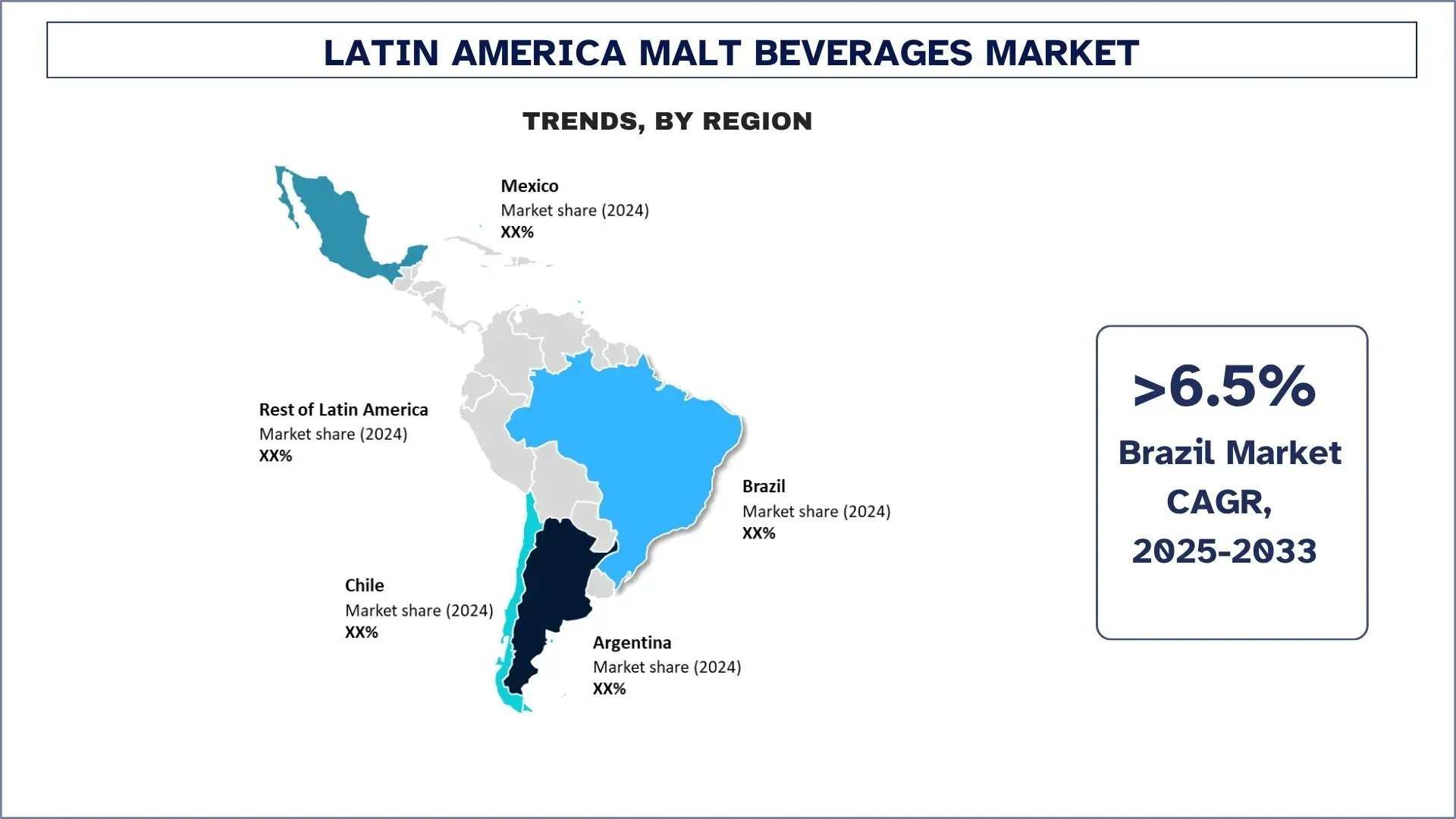
Latin America Malt Beverages Industry Competitive Landscape:
The Latin America Malt Beverages market is competitive, with several global and international market players. The key players are adopting different growth strategies to enhance their market presence, such as partnerships, agreements, collaborations, new product launches, geographical expansions, and mergers and acquisitions.
Top Latin America Malt Beverages Companies
Some of the major players in the market are Boston Beer Co., Heineken NV, Molson Coors Beverages Co., Carlsberg Breweries A/S, AB InBev, Asahi Group Holdings Ltd, and Diageo PLC.
Latin America Malt Beverages Market Report Coverage
Report Attribute | Details |
Base year | 2024 |
Forecast period | 2025-2033 |
Growth momentum | Accelerate at a CAGR of 7.0% |
Market size 2024 | USD 86,500 Million |
Country analysis | Mexico, Brazil, Argentina, Chile, Rest of Latin America |
Major contributing Country | Brazil is expected to dominate the market during the forecast period. |
Companies profiled | Boston Beer Co., Heineken NV, Molson Coors Beverages Co., Carlsberg Breweries A/S, AB InBev, Asahi Group Holdings Ltd, and Diageo PLC. |
Report Scope | Market Trends, Drivers, and Restraints; Revenue Estimation and Forecast; Segmentation Analysis; Demand and Supply Side Analysis; Competitive Landscape; Company Profiling |
Segments Covered | by Product, by Distribution Channel, by Country |
Reasons to Buy the Latin America Malt Beverages Market Report:
The study includes market sizing and forecasting analysis confirmed by authenticated key industry experts.
The report briefly reviews overall industry performance at a glance.
The report covers an in-depth analysis of prominent industry peers, primarily focusing on key business financials, type portfolios, expansion strategies, and recent developments.
Detailed examination of drivers, restraints, key trends, and opportunities prevailing in the industry.
The study comprehensively covers the market across different segments.
Deep dive Country-level analysis of the industry.
Customization Options:
The Latin America Malt Beverages market can further be customized as per requirements or any other market segment. Besides this, UnivDatos understands that you may have your own business needs; hence, feel free to contact us to get a report that completely suits your requirements.
Table of Content
Research Methodology for the Latin America Malt Beverages Market Analysis (2023-2033)
We analyzed the historical market, estimated the current market, and forecasted the future market of the Latin America Malt Beverages market to assess its application in major countries. We conducted exhaustive secondary research to gather historical market data and estimate the current market size. To validate these insights, we carefully reviewed numerous findings and assumptions. Additionally, we conducted in-depth primary interviews with industry experts across the Malt Beverages value chain. After validating market figures through these interviews, we used both top-down and bottom-up approaches to forecast the overall market size. We then employed market breakdown and data triangulation methods to estimate and analyze the market size of industry segments and sub-segments.
Market Engineering
We employed data triangulation techniques to finalize the overall market estimation and derive precise statistical numbers for each segment and sub-segment of the Latin America Malt Beverages market. We split the data into several segments and sub-segments by analyzing various parameters and trends, by Product, by Distribution Channel, and by country within the Latin America Malt Beverages market.
The Main Objective of the Latin America Malt Beverages Market Study
The study identifies current and future trends in the Latin American Malt Beverages market, providing strategic insights for investors. It highlights Country-level market attractiveness, enabling industry participants to tap into untapped markets and gain a first-move advantage. Other quantitative goals of the studies include:
Market Size Analysis: Assess the current forecast and market size of the Latin America Malt Beverages market and its segments in terms of value (USD).
Latin America Malt Beverages Market Segmentation: Segments in the study include areas by Product, by Distribution Channel, and by
Regulatory Framework & Value Chain Analysis: Examine the regulatory framework, value chain, customer behavior, and competitive landscape of the Latin America Malt Beverages industry.
Country Analysis: Conduct a detailed Country analysis for key areas such as Mexico, Brazil, Argentina, Chile, and the Rest of Latin America.
Company Profiles & Growth Strategies: Company profiles of the Latin America Malt Beverages market and the growth strategies adopted by the market players to sustain the fast-growing market.
Frequently Asked Questions FAQs
Q1: What is the Latin America Malt Beverages market’s current market size and growth potential?
The Latin America Malt Beverages market was valued at 86,500 million in 2024 and is expected to grow at a CAGR of 7.0% during the forecast period (2025-2033).
Q2: Which segment has the largest share of the Latin America Malt Beverages market by Product?
Alcoholic malt beverages have held the major share of the market due to the traditional consumption of alcoholic drinks by the population in general for recreational purposes.
Q3: What are the driving factors for the growth of the Latin America Malt Beverages market?
• Expanding Urban Middle Class Fueling Premium Demand: A growing urban middle class with higher disposable income is driving demand for premium and craft malt beverages across Latin American cities.
• Shift Toward Healthier and Low-Alcohol Options: Consumers are increasingly choosing low- and non-alcoholic malt beverages in response to rising health awareness and lifestyle shifts toward moderation.
Q4: What are the emerging technologies and trends in the Latin America Malt Beverages market?
• Preference for Local and Authentic Beverage Experiences: Producers are focusing on locally inspired flavors and ingredients to connect with regional consumers seeking authenticity and cultural relevance.
• Mergers & Acquisitions in the Latin America Malt Beverages Market: Growing M&A activity is reshaping the competitive landscape, with global brands acquiring local players to enhance market penetration and expand production capacity.
Q5: What are the key challenges in the Latin America Malt Beverages market?
• Economic Uncertainty Impacting Consumption Patterns: Fluctuating economic conditions, inflation, and currency volatility are influencing consumer spending behavior and product affordability.
• Supply Chain and Regulatory Pressures on Producers: Complex import regulations, logistics constraints, and varying national policies pose challenges for producers in maintaining a consistent supply and compliance across the region.
Q6: Which country dominates the Latin America Malt Beverages market?
Brazil dominates the Latin American Malt Beverages market due to a large agricultural sector and animal farming applications for Malt Beverages.
Q7: Who are the key players in the Latin America Malt Beverages market?
Some of the top Malt Beverages companies in Latin America include:
• Boston Beer Co.
• Heineken NV
• Molson Coors Beverages Co.
• Carlsberg Breweries A/S
• AB InBev
• Asahi Group Holdings Ltd
• Diageo PLC
• Others
Q8: What are the opportunities for companies within the Latin America Malt Beverages market?
• Integration with Tourism: The revival of tourism and hospitality sectors across Latin America presents strong opportunities for malt beverage brands to engage consumers through brewery tours, tasting events, and experiential marketing.
• Growing Sports Culture to Promote Malt Beverages: The region’s expanding sports culture, particularly football and fitness events, is opening new avenues for brand partnerships and sponsorships. Malt beverage producers are capitalizing on these opportunities to align with active lifestyles and foster emotional connections with young and energetic consumer groups.
Q9: How are consumer preferences shaping product development in the Latin America Malt Beverages market?
Consumer preferences for healthier, low-alcohol, and locally inspired beverages are driving producers to innovate with natural ingredients, unique flavors, sustainable packaging, and premium offerings tailored to regional tastes and lifestyles.
Related Reports
Customers who bought this item also bought

